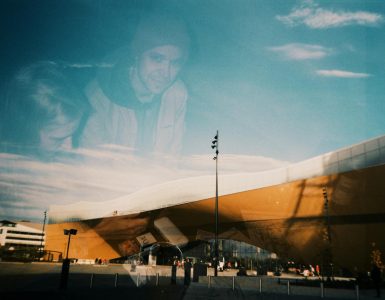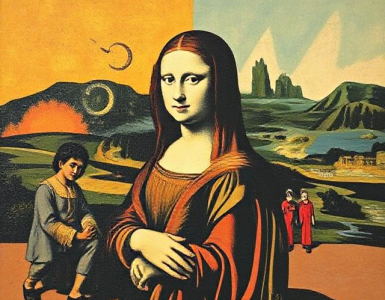We consume entertainment and art constantly, but how often do we really see it? We passively watch movies, listen to music, and scroll through art online, rarely pausing to consider the intricate web of influences and hidden details that make these experiences so compelling. This article aims to peel back the curtain, revealing some fascinating insights you might have overlooked. Die geheime Sprache der Geschichte: Unerwartete Anhaltspunkte in Unterhaltung und Kunst
The Unexpected Symphony of Filmmaking
Think about your favorite movie scenes. Chances are, the impact isn’t just about the actors or the plot. Subtle elements play a massive role. Consider the use of color: the sickly yellow hues in Stanley Kubrick’s *A Clockwork Orange* amplify the unnerving atmosphere, far beyond simply being “aesthetically pleasing.” Similarly, the vibrant, almost hyper-saturated colors in Wes Anderson’s films aren’t random; they contribute significantly to the distinct visual style and overall tone. This isn’t just about cinematography; it’s about deliberate artistic choices impacting our emotional response.
Then there’s the magic of sound design. The subtle creaks in the background of a horror film, the perfectly timed beat drop in a dramatic scene – these are often overlooked, yet they deeply shape our experience. The “Wilhelm scream,” a stock sound effect used countless times across various films, provides a fun example of how recurring sounds can create a sense of familiarity and even humor. It’s a testament to the power of sound design in shaping our perception and emotional engagement.
Even seemingly minor details can have profound effects. Think about the meticulously designed sets in period pieces like *Mad Men*. The furniture, props, and even the color palettes of the offices aren’t just “dressings”; they are carefully constructed to reflect the era’s social and economic realities. They give context and depth to the characters and their stories, enhancing our understanding and enjoyment of the show. Similarly, the deliberate choices in costume design can speak volumes, acting as visual cues to character development and plot points.
The Hidden Lyrics in Music
Music isn’t just about catchy tunes and memorable melodies. The lyrics often contain layers of meaning and artistry that are easily missed on a first listen. For instance, Bob Dylan’s poetic and cryptic lyrics require deep engagement – it’s not uncommon for scholars to devote their lives to understanding his work. The complexity of his wordplay, metaphors, and allusions makes each song a mini-literary masterpiece. Similarly, many hip-hop artists use intricate rhyme schemes and wordplay to create a rich sonic tapestry that goes far beyond simple storytelling. Consider the metaphorical depth of Kendrick Lamar’s work or the social commentary woven into the lyrics of many rap artists like Run the Jewels.
Beyond the lyrics, the musical composition itself holds hidden depths. Think about the use of minor keys to create a sense of unease or major keys to evoke joy and triumph. The instrumentation, tempo, and rhythm all contribute to the emotional impact, often in ways we don’t consciously register. The use of unusual instruments or unconventional structures can transform a song from a simple three-minute track to an immersive experience.
The Unspoken Stories in Visual Arts
Visual arts, much like film and music, often harbor layers of meaning often overlooked. Consider the symbolism embedded in classical paintings. The seemingly innocent still life could harbor hidden meanings related to religion, mortality, or social commentary. Looking beyond the surface beauty of a piece can reveal a deeper understanding of the artist’s intentions and the historical context of the artwork. For example, the symbolism in many Renaissance paintings, often laden with religious iconography and allusions to classical mythology, reveals a rich intellectual and spiritual context.
Even the choice of medium can communicate meaning. The rough texture of an impasto painting versus the smooth surface of a polished sculpture conveys different emotions and intentions. The deliberate brushstrokes in an Impressionist painting, or the precise lines in a work of cubism, speaks volumes about the artist’s technique and underlying message. Analyzing the material itself – the types of paints used, the texture of the canvas, the type of stone – can shed light on the artist’s process and stylistic choices.
Street art, a modern form of visual expression, often carries powerful social and political messages. Graffiti artists cleverly weave social commentaries into striking visual pieces; the vibrant colors and boldly stated messages often speak louder than any written manifesto. Banksy perfectly exemplifies this, using his anonymous street art to critique consumerism, war, and social inequality in provocative and thought-provoking ways.
The Interconnectedness of It All
Finally, it’s crucial to recognize the interconnectedness of these artistic disciplines. Movie soundtracks often borrow from existing musical styles or create new ones that influence future artists. Filmmakers and visual artists draw inspiration from each other’s styles, techniques, and narratives. The cross-pollination of ideas and innovation creates a rich tapestry of creative expression, driving the evolution of art and entertainment across generations.
So, the next time you enjoy a film, listen to a song, or visit a museum, take a moment to look beyond the surface. Pay attention to the subtle details, the hidden meanings, and the intricate connections between different forms of art. You might be surprised by the wealth of hidden stories waiting to be discovered.























Kommentar hinzufügen